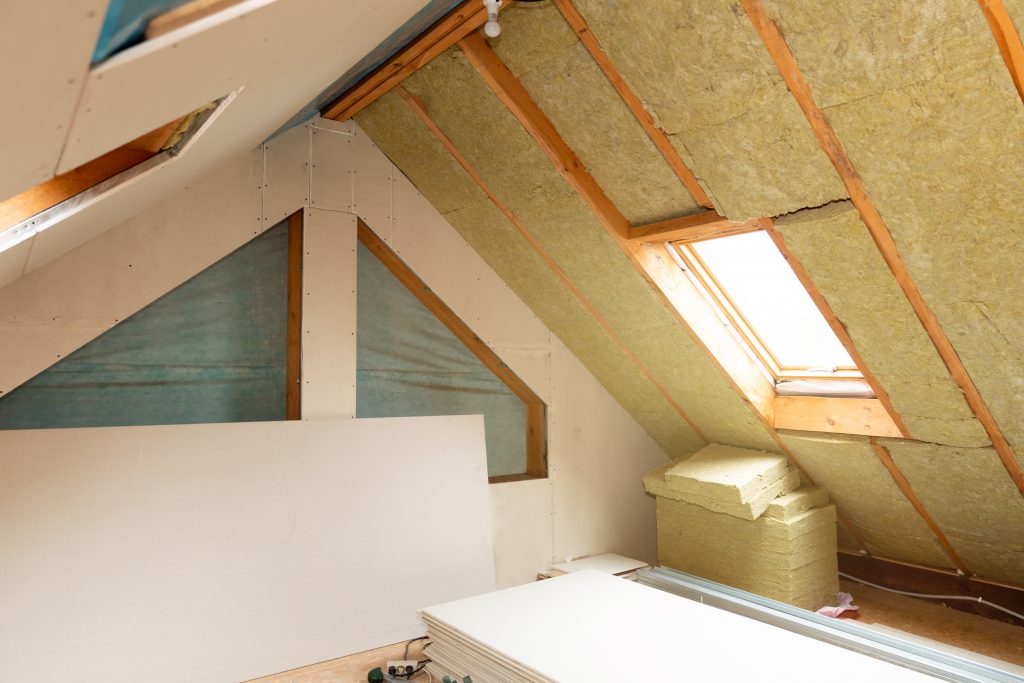BBC News recently reported on “cowboy” loft insulation companies, and we want to prevent this from happening to people, so here is our guide on everything you need to know about loft insulation and government funding!
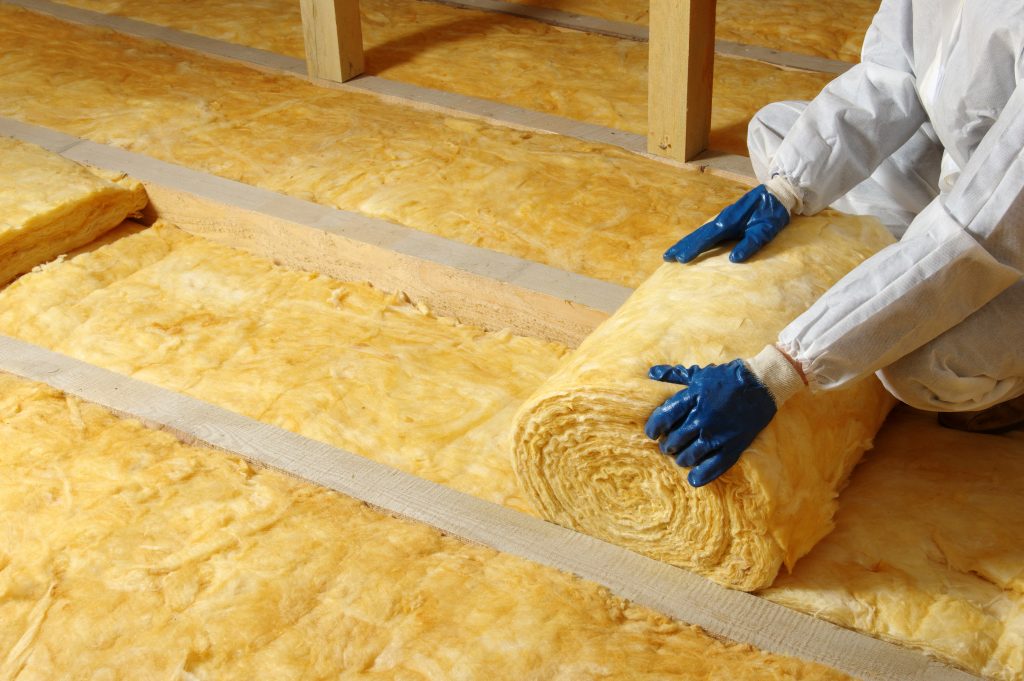
Introduction to loft insulation and government funding:
If the insulation in your loft is less than 100mm deep, energy is being wasted and heat is escaping through your roof. If you check the EPC register and your property is listed, it may show the depth of the insulation checked by an assessor at the time it was registered. Unless you know exactly how much insulation there is or isn’t in your loft, you will need somebody to go into the loft space with a tape measure and find out if you need a loft insulation install. You could be entitled to a grant to increase the energy efficiency of your home. Improveasy is a specialist loft insulation installer and we can offer qualifying households this install fully funded. The ECO4 scheme offers qualifying people free loft insulation, and we are also helping to deliver local authority funding for home upgrades in Cheshire East, Cheshire West, and Cumbria. Scroll down for further information on each of these funding types and how you qualify.
First of all, let’s answer the question:
Why insulate a loft?
25% of a property’s heat is lost through the roof. A layer of insulation will trap heat inside the rooms below the loft, so the air within your property stays warmer for longer. Insulating any part of the house makes you less likely to turn the heating on and saves you money.
Which type of loft insulation is best?
Our Quality Assurance Assessor Connor Morris says: “I recommend Earthwool”. Knauf’s Earth Wool, or Loft Roll, is a roll of insulation made from glass wool, which is fibre glass. It is made of recycled glass and sand. The fibres of glass are arranged in a texture similar to wool. This design traps air pockets which have effective thermal insulation properties. Glass wool can be in a roll or in slabs. Glass wool is fireproof, cheap, and recyclable.
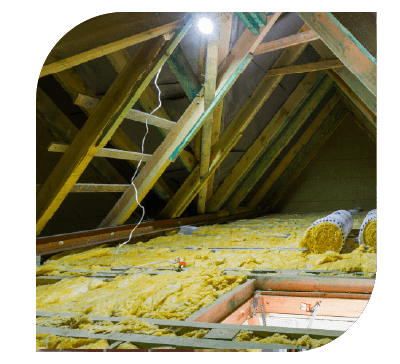
How does loft insulation reduce heat loss?
The insulation stops heat escaping. Using loft insulation prevents air from leaving your property via the roof.
Gases, in this case air (oxygen), have poor thermal conduction properties. Because of this, good insulation material can be created by trapping air within material. Air can resist the transfer of heat. Poor conductors of heat are called thermal insulators. Loft insulation is full of air which prevents the transfer of thermal energy. The molecules of air are further apart than in solids or liquids, so the transfer of heat is more difficult. For the same reason, insulation keeps the heat out of the house on hot days and in the house on cold days. The trapped air is slow to transfer thermal energy.
The more air trapped, the better the insulation. Because of this, you should not compress loft insulation.
Glass fibres are used to trap air in the foam structure of loft insulation material. The same principle used in glass wool is used in other insulating materials such as Styrofoam or Gore-Tex. This kind of air trapping is also the insulation used in nature, such as in down feathers and sheep’s wool.
Should I remove old loft insulation before laying new?
You do not need to do this unless it is damaged, such as from damp. This will often be obvious just by getting up to your loft and looking at it.
Can I insulate my loft myself?
Yes, you can insulate your loft yourself. However, if you are concerned about covering up important ventilation it is better to consult a professional. Also, some materials used for loft insulation, including Earthwool, are irritating to our eyes and skin and can be harmful to inhale. For this reason, you must wear a mask, gloves, goggles, and protective clothing when you are fitting loft insulation. Mineral fibres are released when you are laying down fibre glass, and so you must take these precautions in order to prevent any inflammation.

Can you have too much loft insulation/ can too much loft insulation cause mould?
Connor says that: “Mould is caused when ventilation hasn’t been fitted or has been blocked.” The right amount of loft insulation itself will not cause damp or mould so there will be another underlying ventilation issue in the property.
Damp occurring in lofts is a result of moist air being trapped in a space that is not ventilated or cannot ventilate fast enough. Condensation can be caused by showering, bathing, cooking, and drying wet clothes. If you can see condensation on your loft windows or beading on walls or beams you will have a damp problem. This could lead to rotting. Glass wool also loses its insulating properties when it comes into contact with water, so this is an issue you must remedy.
There are several different types of roof vents. Air has to flow in and out of your house so the rooms stay fresh and dry. Good installers will not block up any vents. If you are doing your loft insulation yourself you must be sure not to block any vents or airbricks.
Should loft insulation go to the edges?
Yes, but do not cover over any ventilation and make sure there is still ventilation after insulating.
How thick should loft insulation be?
Loft insulation should be between 270 to 300mm. If you have less than this your house could be warmer, and if you have more you could risk blocking air from moving around your loft easily, which can lead to ventilation issues.
How much does loft insulation cost?
If you are doing it yourself, this depends where you buy your insulation from and how much you buy. It is usually around £15 to £30 per roll, but when buying in bulk it is cheaper. If you qualify for government funding, loft insulation is free.
Can you lay loft insulation over joists?
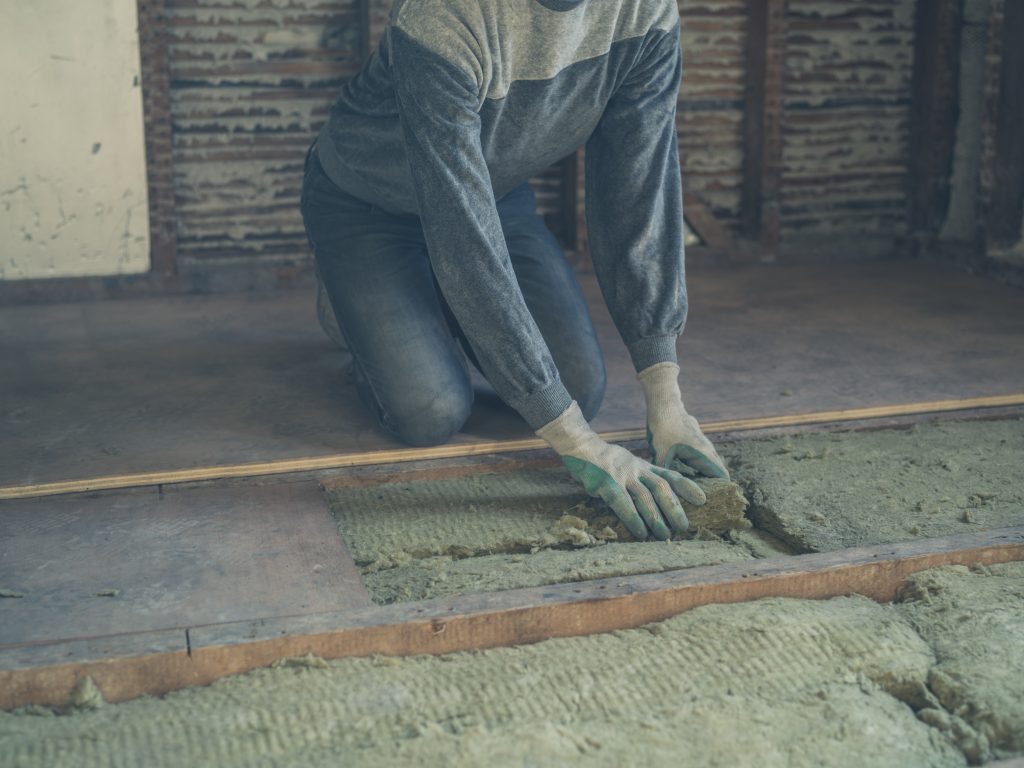
Yes, this is typical for a loft insulation install. Installers will first insulate between the joists and then over and across the joists – this is called cross laying. This will make it level.
Can I still use my loft for storage once my loft has been insulated?
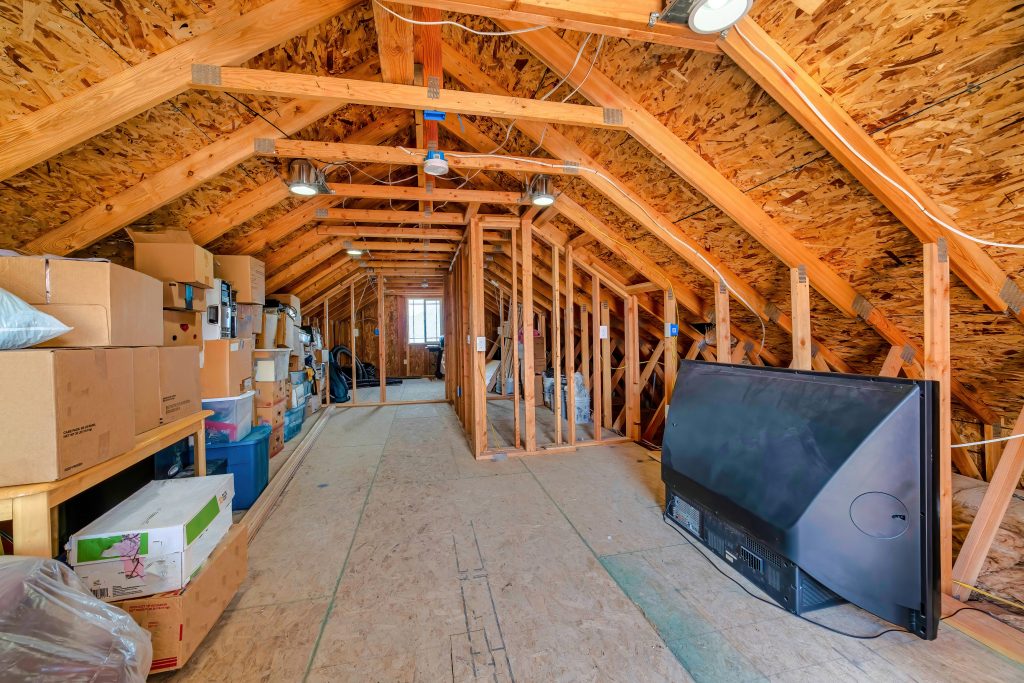
No, you cannot place items on top of insulation as it will reduce its efficiency. Compressing it would prevent it from insulating. However, sometimes it is possible to construct a platform over the insulation. You can install loft storage stilts which would support boarding upon which you can place what you want to have kept in the loft. You must ensure this is not too heavy as it could damage the ceiling.
Loft and roof insulation grants
Multiple different government grants mean that if you are on certain benefits your loft insulation will be completely free and you will never have to pay this back. ECO4, LAD, and HUG are the main grants which currently offer loft insulation. They all have slightly different qualifying criteria. The purpose of each of these grants is to improve the energy efficiency of your home and reduce your heating bills.
Government grants for loft insulation
∙ ECO4 is a nationwide government home upgrade grant which includes loft insulation installs.
Your property must have a poor energy efficiency rating. You must not already have loft insulation. You, or someone in your property, must be in receipt of one of the following benefits:
Child Tax Credit
Working Tax Credit
Universal Credit
Pension Credit Guarantee Credit
Pension Credit Savings Credit
Income Support
Income-based Jobseeker’s Allowance
Income-related Employment and Support Allowance
Child Benefit
Housing Benefit
We have helped to deliver the ECO scheme for years. Our company can assess whether you qualify and fit your insulation, so please do not hesitate if you are interested, call us on 0800 024 8505.
Local council grants for loft insulation
∙ LAD (or the Local Authority Delivery) is local council based funding which the authority has to apply for before it can be delivered to households. Different councils will deliver the scheme in different ways and may refer to it in different terminology. Again, your home must have poor energy efficiency. On this scheme your home must be on the gas grid. You, or someone in your property, must be in receipt of one of the following benefits:
Child Tax Credit
Working Tax Credit
Universal Credit
Pension Credit Guarantee Credit
Income Support
Income-based Jobseeker’s Allowance
Income-related Employment and Support Allowance
You can also qualify if your combined annual household income is £30,000 or below.
We are delivering the LAD scheme currently for people who live in Cumbria. Call us on 0800 058 4357 to apply.
∙ HUG (or the Home Upgrade Grant) works in the same way as the above LAD scheme, but it is only for properties which are off the gas grid. The rest of the criteria is exactly the same including the annual household income qualifier. We are delivering the HUG scheme in Cheshire East and Cheshire West. Please call us on 0800 058 4240 to apply for either of these local authority areas.
Can you get free loft insulation if not on benefits?
Yes, if your local council has the funding and your annual household income is lower than 30k. The LAD and HUG schemes outlined above offer this.
What are the disadvantages of loft insulation?
If you can get loft insulation free, there is no disadvantage. If you can’t, then only that loft insulation costs money to install, but when it is such a low cost it is worth it!
Warm and cold lofts – How to insulate a converted loft
If you do not utilise your loft and want to keep heat down to benefit the rooms below you have what is called a cold loft, and if your loft is converted and used as a bedroom or bathroom for example, then this is a warm loft.
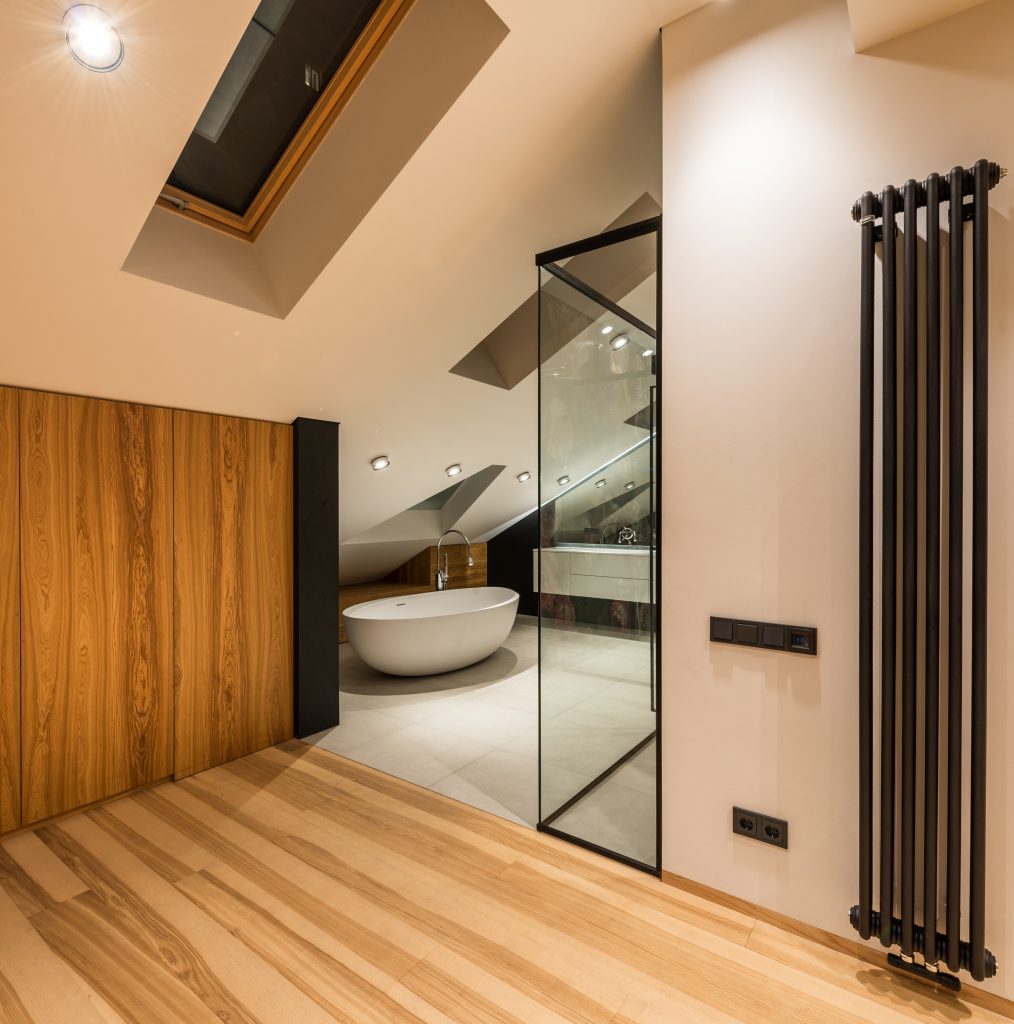
Room in roof insulation (RIRI) is a different install and home upgrade measure to loft insulation as it involves plastering over insulation fixed onto the ceiling of your loft. For room in roof insulation, boarding is fitted in between the rafters or loft roll is fixed in place and held up with netting – this is then plastered over. This is a more expensive install. The same government grants explained above also cover this measure.
